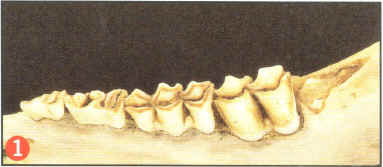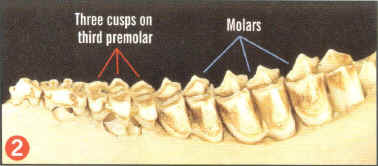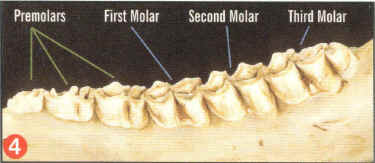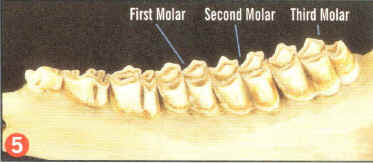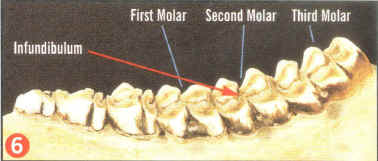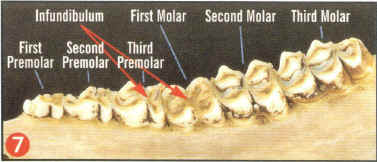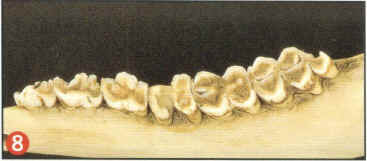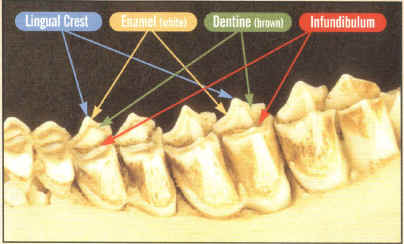
Whitetail deer can be aged by tooth wear. In fact, it can be quite easy to determine whether a deer you harvested or a jawbone you found is that of a young or old deer. The ability to estimate a whitetail deer’s age based on tooth wear is something most hunters can learn over time with the help of photos and practice in the field.
Few hunters will have a hard time aging a white-tailed fawn. You can many cues from the body, if available, because the animals will have a short snout and small body. If you are looking at the teeth, just count the teeth in the deer’s lower jaw. If the jaw has less than six teeth the deer is a fawn, likely 4 to 8 months of age.
The sign of a year and a half year old deer is the third premolar, which has three cusps. This is also the age where deer start to shed their “milk teeth,” so this third premolar is important. In this photo you can see the permanent premolars partially erupted as they push up under the loosening milk teeth. If the third tooth only has 2 cusp, then the animal is older than one and a half.
After two and a half years of age, it is important to notice changes in the dentine and lingual crests (the side by the tongue) of the teeth as well. The lingual crests of the first molar are sharp, with the enamel rising well above the narrow dentine of the crest. Crests on the first molar are as sharp as those on the second and third molar. Wear on the posterior cusp of the third molar is slight, and the gum line is often not retracted enough to expose the full height of this cusp. A two and a half year old’s teeth (as seen above) look very “sharp.”
Teeth will begin to show slight wear at three and a half. The lingual crests of the first molar are blunted, and the dentine of the crests on this tooth is as wide or wider than the enamel. Compare it to the second molar. third dentine on the second molar is not wider than the enamel, which means this deer is probably three and a half years old. Also, the posterior cusp of the third molar is flattened by wear, forming a definite concavity on the biting surface of the teeth. This is a good sign to look for to substantiate your estimate.
By age four and a half, it starts to get more difficult to distinguish between the age classes. Things to look for include that the lingual crests of the first molar are almost worn away and that the posterior cusp of the third molar is worn at the cusp’s edge so the biting surface slopes downward. Wear has spread to the second molar. making the dentine wider than the enamel on the first and second molars. By age five and a half, wear has usually spread to all six teeth, making the dentine wider than the enamel on all teeth. Because the first molar is the oldest, it wears out first.
Segregating individual whitetail by a specific age becomes increasingly difficult by age six and half to seven and a half years old. Wear is moderate on the first premolar and heavy on the second and third premolars. On the third premolar, infundibulum might appear as a small triangular hole. On the first molar, the infundibulum appears as fine line or chevron, or it might be absent. little or no enamel remains on the first molar.
At age eight to nine and a half, tooth wear is more extreme than in previous years–and this is what you should be expecting by this point! In some cases, the pulp cavity might be exposed in some teeth. Some teeth will be worn to the gum line. There will be large amounts of dentine visible indicating that this is a very old deer.
